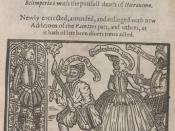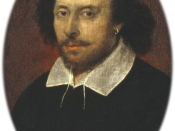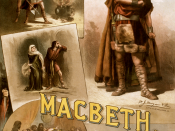In all his tragedies Shakespeare represents the tragic aspect of life, the tragic fact. They have up to a certain point a common form or structure, however the question here is: what is Shakespeare's conception of tragedy?
Shakespearean tragedy is the story of one person - the hero (or in love tragedies hero and the heroine). The story leads up to and ends in the death of the hero. The story depicts the troubled part of the hero's life which precedes his death. This troubled period usually comes after a period of great prosperity, happiness, or glory. The sufferings and calamity are also exceptional. They befall a conspicuous person.
Such exceptional suffering and calamity affecting the hero, and generally extending far and wide beyond him, so as to make the scene a tale of woe are the chief source of tragic emotions. It makes us feel that a man is blind and helpless in the hands of a nameless power that appears to smile on him for a while and then strikes him down in his pride.
Such was the medieval conception of a tragedy. Shakespeare's idea of tragedy is larger than this idea and goes beyond it:
a. All Shakespeare's heroes are men in high estate and we must agree that it is true that the pangs of despised love and the anguish of remorse are the same in a peasant and a prince but the story of a prince, the triumvir, or the general, has a greatness and a dignity of its own. His fate affects the welfare of the whole nation and when he falls suddenly from the height of his greatness to the dust, this produces a sense of contrast of the powerlessness and omnipotence which no tale of private life can rival.
b. The calamities...


